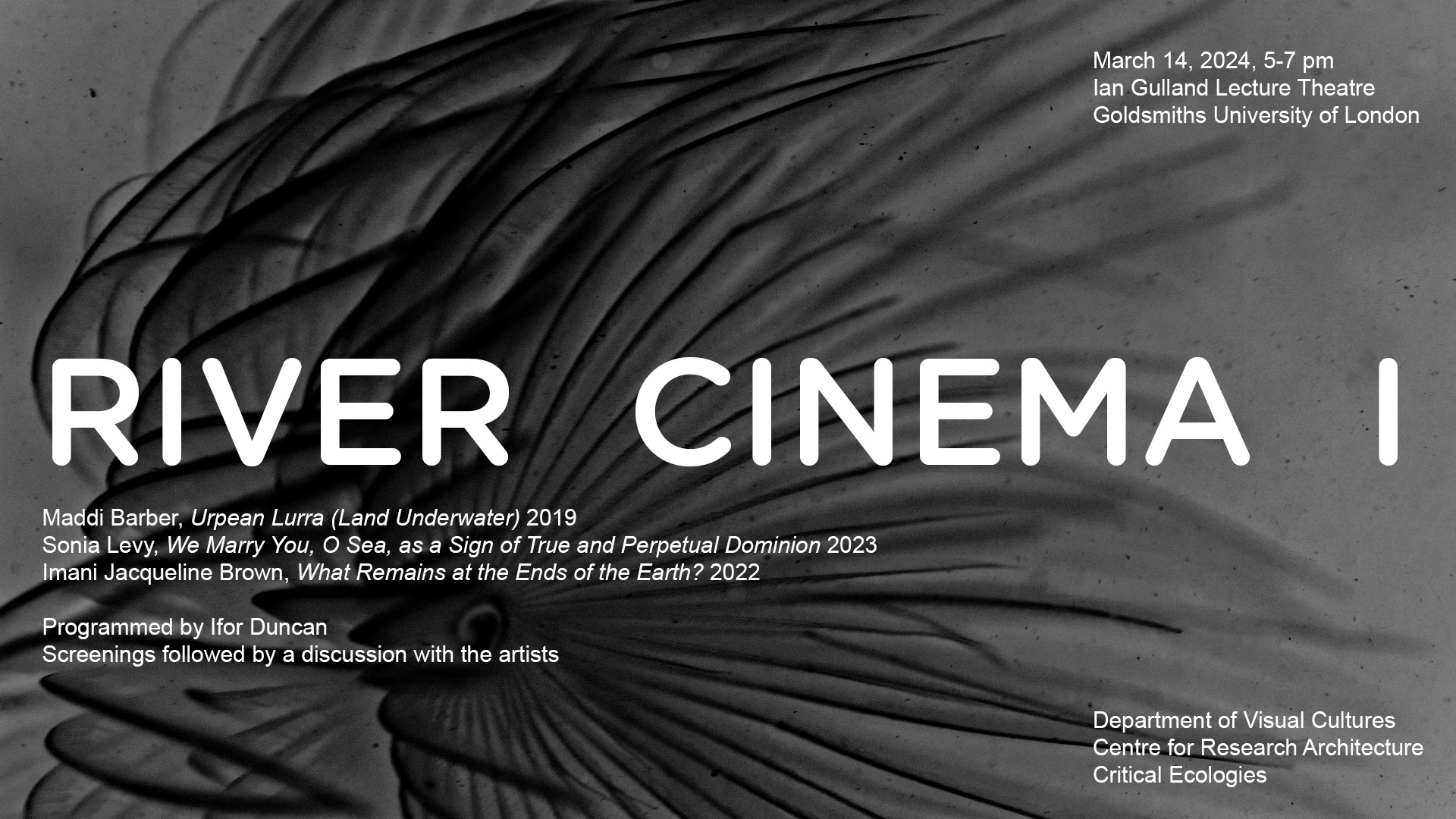River Cinema
14 March 2024

A film series organised by Dr Ifor Duncan
Maddi Barber, Urpean Lurra (Land Underwater), 2019, 50 mins
In 2003, the Itoiz reservoir flooded seven villages and three nature reserves in the Pyrenees. Solidari@s with Itoiz documented the fight against its construction on video. Today, activists, former inhabitants of the area and the director of the film still dream about the region’s past and the land that remains underwater.
Sonia Levy, We Marry You, O Sea, as a Sign of True and Perpetual Dominion, 2023, 18 min 12 secs
We Marry You, O Sea, as a Sign of True and Perpetual Dominion engages with Venice and its Lagoon "from below", bringing attention to the city's submerged, life-giving, and altered bio-geomorphological processes rather than on its often-recounted political and military histories. Underwater filmmaking exposes a fractured and troubled environment that complicates mainstream historical narratives that start above the water's surface.
Imani Jacqueline Brown, What Remains at the Ends of the Earth? 2022, 11 mins 29 secs
What remains at the ends of the earth? investigates the intersecting histories of land inhabited by Black Louisianans, and the vast network of fossil fuel infrastructure that overlays these sites today. It aims to bring visibility to the ways fossil fuel production inherits the racist spatial, economic, and environmental logics imposed by slavery.
We Marry You, O Sea, as a Sign of True and Perpetual Dominion engages with Venice and its Lagoon "from below", bringing attention to the city's submerged, life-giving, and altered bio-geomorphological processes rather than on its often-recounted political and military histories. Underwater filmmaking exposes a fractured and troubled environment that complicates mainstream historical narratives that start above the water's surface.
Imani Jacqueline Brown, What Remains at the Ends of the Earth? 2022, 11 mins 29 secs
What remains at the ends of the earth? investigates the intersecting histories of land inhabited by Black Louisianans, and the vast network of fossil fuel infrastructure that overlays these sites today. It aims to bring visibility to the ways fossil fuel production inherits the racist spatial, economic, and environmental logics imposed by slavery.